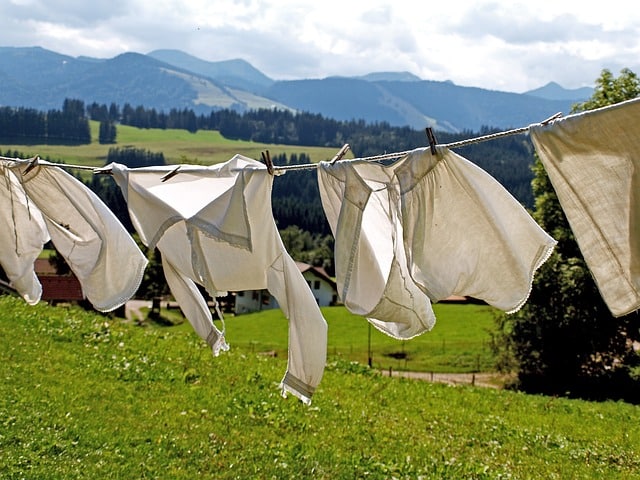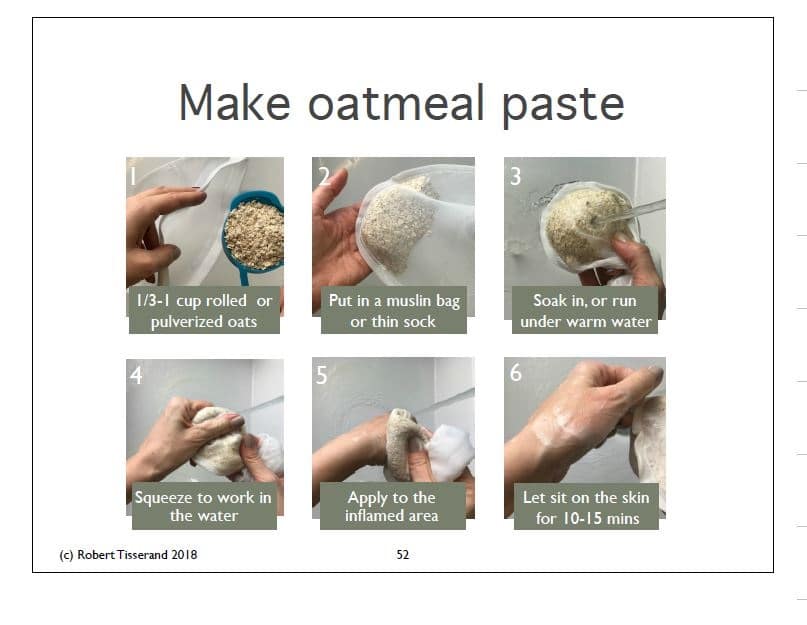[A revisit to an archived blog from March 14. 2012]
Health Alert: Avoiding Synthetic Fragrances
This was the headline in a Consumer Reports newsletter in my mailbox years ago. Now, I have been avoiding synthetic fragrances for decades. But… for those who don’t know:

Consumer Reports issued a report criticizing the use of synthetic fragrances in the dryer. “Consumer Reports environmental experts say you should get nervous about smells that won’t quit, especially when you don’t know what you’re smelling. The product’s label just says “perfume dispersant, perfume and dyes.” The manufacturer, Procter & Gamble, told Consumer Reports that perfume ingredients are “proprietary information,” but it says that the chemicals they use are at safe levels.” I am sure we all find that reassuring.
The good news is that it is possible to add fragrance to your laundry, and know exactly what you are using!
This is what I do. (Years ago a serious case of contact dermatitis landed me in the ER. I was taught there to *never* use a “dryer sheet” to soften cloths, to buy and use only the “FREE” detergents – unscented with no color – and to put some white vinegar in the fabric softener cup of my Washing Machine. Two washing machines later, I’m still following that advice.)
If I’m washing clothes that may have a bit of musty mold scent… a generous splash of Palma Rosa or Eucalyptus citrodora (Lemon Eucalyptus) goes into the wash water with the detergent. Anti fungal oils will freshen towels that perhaps sat, damp, too long. If clothes are grease stained, some Orange essential oil with the detergent will remove any greasy aroma. (Be aware though, that Orange Oil CAN discolor white clothes.) LilBit slept too long on my quilt? Fresh Aire synergy does a GREAT job at removing the scent of wet dog.
Other things that I do. (For various reasons I can’t dry my clothes on a clothes line. Cold water washing and low heat drying is as “green” as I can be.) There is NOTHING like the smell of sheets and pillowcases, blown dry on a line in the sun and freshly made up on your bed.
Lacking that option… I have two or three old washcloths (rags!) that sit on the dryer. When a load of clothes I want to subtly scent goes in the dryer, a few drops of essential oil or blend go on a rag, and it gets tossed in with the wet clothes. Normally I am aiming at a VERY faint aroma, and use only a few drops of EO. More essential oil, obviously, makes the scent of the clean and dried clothes a bit stronger.
Fresh Aire, again, for towels, and a lot of my clothes. Linens? Lavender, or, if I am feeling decadent and self indulgent..a drop of Rose. A man’s laundry could be scented with Cedarwood or Sandalwood.
We’ve all done it. Ended up spilling or applying undiluted essential oils onto our skin.
Perhaps, with all the good caution in the world, you spilled an oil while measuring. (One of our staff once spilled an 8 ounce “pour bottle” of Pink Grapefruit onto her blue jeaned lap…this possibility is why not only do we have an emergency eyebath fountain on the production floor, but a walk in shower in our restroom.)
Perhaps you were told that oils could be applied undiluted, or you were given a roller bottle with not enough fixed oil for a safe dilution.
Perhaps a child got at a not tightly sealed bottle and spilled some on himself. (If a child has ingested essential oils do not delay, please call the National Poison Control Center at this number: 1-800-222-1222!)
What to do?
We see a lot of recommendations that you apply a carrier oil. PLEASE do not do that! It is not the solution. Applying a fixed/carrier oil will hold the essential oil against the skin and slow evaporation, thus increasing the risk of irritation and long term sensitization.
- WASH with soap and water. Wash WELL with soap and (warm, not hot) water. (Ideally for from 10 to 15 minutes.) That may be all you need to do. If there is no redness or irritation, you are home free.
- If skin is red, irritated, or painful, after removing the essential oil with soap and warm water, the best way to sooth the irritation is with an oatmeal wash.
Take a couple of handsful of whole oats. (the big cardboard Quaker Oats canister in the cereal shelf of your local grocery.) Pour them into a muslin bag or a thin sock. Knot the top shut and dip in water. Squeeze and massage the bag, and you will see a milky white liquid coming from the oats. Gently dab the irritated skin with this “Oatmilk” and let it dry. Repeat as needed.

If most of the body has been affected (yes, sometimes people spill a whole bottle of essential oil into their laps, see above.) then a bath, with a LOT of oats in the water will help. But after the bath, if needed, apply some more of the homemade “oatmilk.”
Why oats, specifically? Because oats contain specific constituents called avenanthramides. which are extremely powerful anti-inflammatories, found only in oats, (in very very low amounts, but still effective.) Research has shown the anti-inflammatory and anti-itch compontent of aventhramides. (And yes, they are bioavailable, so eat your oatmeal, children…preferably with brown sugar and raisins.)
(Personal note…Ground oats in a bag are a wonderful addition to a soothing bath. I keep a container of powdered oats in the bath room. Those would be best for the above remedy. But I’d not take the time to run them through the food processor or blender in an emergency.)
Note that at no time have we suggested applying any essential oils to the skin. Not anti-inflammatory oils, not skin soothers. None.
If the skin is still irritated, you might apply an unscented cream or lotion.
If the reaction is stronger than these simple home remedies can deal with, a trip to the Emergency Room would be appropriate. It’s vary rare, but an essential oil spill can lead to an allergic reaction, hives, breathing difficulties, even anaphylactic shock can result.
Graphic courtesy of the Tisserand Institute. Used with permission. For more information about
